Fear not, during these short days and long nights of December, there’s still plenty of life in the fading light. Once we pass the winter solstice, which strikes at precisely 5:23 PM on December 21st, more light will begin to creep back. Until then, here’s some wintry natural history to keep you going.
A ‘Little’ Kiss Beneath the Mistletoe
Mistletoe has been a symbolic plant for thousands of years. In Europe, it became associated with Christmas as a decoration under which lovers were expected to kiss, a tradition that continues in many places today. Of course, this was the European Mistletoe (Viscum album), the only native mistletoe species that ranges across most of Europe. The tradition was carried to the New World where American Mistletoe (Phoradendron leucarpum), similar but with shorter, broader leaves and longer clusters of berries, was adopted. But if you live here in the Northeast, you’re not going to be able to harvest your own mistletoe to hang for the holidays. American Mistletoe only grows in the southern portion of the continent. But we do have a unique mistletoe lurking in our forests, but it looks nothing like the others.
Like other mistletoes, Dwarf Mistletoe (Arceuthobium pusillum) is a bit of a thief, actually a hemiparasite, which means it steals minerals and fluids from its host plant, and also generates some of its own energy through photosynthesis. It grows within the branches of pine, spruce, fir, or tamarack, sometimes causing unusual growths of twigs on the host, called witches brooms.
After a couple to perhaps a dozen years of growth inside the host plant, Dwarf Mistletoe sends reddish-colored aerial stems out of the host branch that bear flowers and fruit. The fruit ripens and fills with fluid, building up pressure until they explode. The sticky seeds can be launched up to twenty feet. And, if they stick to a suitable host branch, they germinate. Of course, the seeds may spread much longer distances by animals too. The new plant penetrates past the cambium layer and into the host’s xylem and phloem tissues; where it steals the nutrients needed for its own growth and reproduction.
Dwarf Mistletoe isn’t an easy plant to find. It’s a rare in the Northeast and listed as Endangered in Connecticut, New Jersey, and Rhode Island as well as Threatened in Pennsylvania. We’ve found it on evergreen trees in a few bogs here in Vermont. So keep your eyes open for the aerial stems on host plants, and if you find one, please do kiss and tell! Snap a photo (of the plant!) and report your sighting to the Vermont Atlas of Life on iNaturalist!
Even in the Darkest Days, There’s a Butterfly Near You
Mourning Cloak butterflies are one of the earliest to appear flying about in spring. They spent the fall fluttering about feeding and storing abdominal fat. Before winter arrived, they found a space to hide – in the woodpile, a hollow tree, a crack in a rock, or inside an old shed. In these protected and somewhat insulated hideouts they enter diapause, a state of dormancy. They become sluggish as the temperature drops. The freezing point of their cell tissue is lowered by an increased content of sugars, which act as an antifreeze. Mourning Cloaks produce sorbitol, a sugar alcohol obtained by the reduction of glucose. Sorbitol is also a sugar substitute that is often used in diet foods and it can also be found in plants in the genus Sorbus, represented by Mountain Ash in New England. Using electrical conductivity, biologists in Alaska found that Mourning Cloaks do not freeze until the temperature reaches -22 F, something that their cozy hideout should never experience. Learn more on the VCE Blog.
Our Winter Warbler
It is an aster in winter, spit in the wind, sun through the clouds – a force of nature called the Yellow-rumped Warbler. Find its buttery warmth even when life outside seems to groan or crunch or crack in the cold. In his tribute to “butter-butts,” VCE Research Associate Bryan Pfeiffer says that it takes guts to be a warbler in winter. Bryan describes the Yellow-rump’s “retrograde reflux of intestinal contents,” which allows the yellow-rump to eat far more than mere insects to make it through the cold. Read it on Bryan’s blog.
“Frog-sicles”
Just a few months ago they were wandering through the woods. But today the Wood Frogs are frozen. When winter cold struck, ice began to form inside their bodies. Glucose levels increase in their blood by as much as 200-fold in just eight hours, creating an antifreeze that, like the radiator in your car, will protect their tissues and organs through the long winter ahead. The ice penetrated throughout their abdominal cavity and encased all internal organs. Large, flat ice crystals formed between the layers of skin and muscle, and frozen lenses made their eyes milky-white. They look like zombies. Their blood stopped flowing. As much as 65% of the frog’s total body water is now locked in ice. Breathing, heart beat, and muscle movements have all stopped. The frozen frogs are now in a state of suspended animation. They’re nearly-dead. But with the spring thaw in just a few months they’ll rise again.
Pine Cones on a Willow?
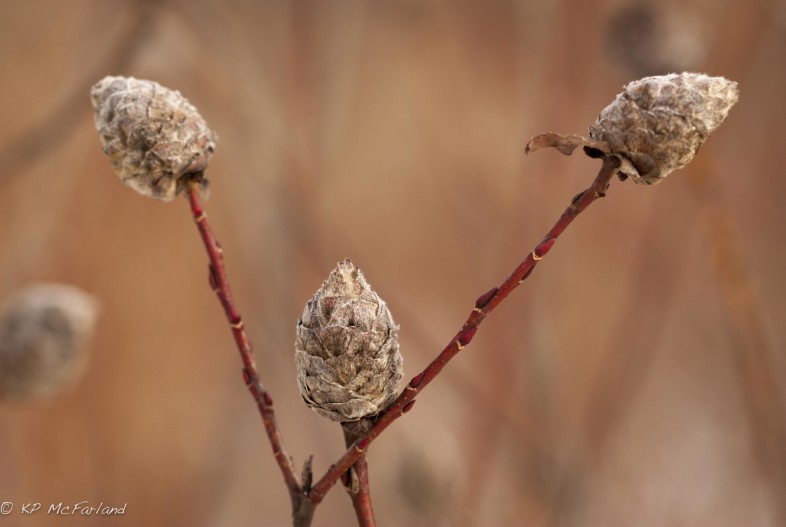
Galls of the Pinecone Willow Gall-midge (Rhabdophaga strobiloides). /© K.P. McFarland
Have you ever seen pine cones on the end of willow branches? They aren’t really pine cones, they are protective homes for the Pine Cone Willow Gall Midge (Rhabdophaga strobiloides), a type of fly that relies on willows for its home.
The adult gall-midge lays its egg on the tip of a willow branch as the terminal buds begin to swell in the early spring. The egg, and larva that hatches, release a chemical that tricks the growing willow leaves into forming a structure that looks superficially like a pine cone made of overlapping leaves.
As the larva feeds the bud ceases to develop, but the plant still directs nutrients to the tissues. Biologists working at the University of Michigan Biological Station at Pellston, Michigan, found that somehow the gall-midge manipulates the willow to provide resources from other places in the plant to the gall for them to continue to feed and survive. They found that galled twigs compared with normal twigs had greater growth in twig girth than when no gall is present and twigs with galls grew equally well with or without leaves. The bud continues to swell as the larva feeds and grows. When winter sets in, encased in the cone structure, the larva is protected from predators, but not from the cold.
The larvae aren’t freeze tolerant. Instead, they rely on extreme supercooling, the process of lowering liquid temperatures to below the freezing point without becoming a solid. How do they do this? Overwintering willow gall larvae can contain as much as fifty percent glycerol, historically used in cars as anti-freeze. Some individuals in Alaska were found to have extreme supercooling that allowed them to survive down to -76 degrees Fahrenheit.
At some point in the spring, the larva will pupate and the adult gall-midge will emerge. They don’t have mouthparts to chew their way out of the gall. Instead, they simply push and squeeze between the overlapping leaves of the gall and fly away.
A Voracious and Venomous Mammal
Northern Short-tailed Shrews (Blarina brevicauda) are a common small mammal in northern deciduous forests. Weighing a mere ounce and just four inches long, they pack an interesting bite. They’re venomous. These voracious insectivores have chemistry on their side.
Their saliva contains venom that paralyzes its prey. Its strong enough to kill another small mammal and cause a fairly painful, though far from lethal, bite to a human. The venomous saliva is secreted from glands through a duct which opens at the base of the lower incisors, where the saliva flows along the groove formed by the two incisors. As they bite and chew, the venom seeps into the prey.
They have many behavioral and physical adaptations to survive the winter, They build elaborate lined nests, hoard energy-rich food, and forage under the leaf litter and snow when the temperatures allow and stay in the nest when the thermometer dips. They eat >40% more food in winter than in summer, as they increase their metabolism to ward off the cold. Body heat is generated from brown fat, which has a unique protein that allows energy to dissipate as heat.
A Warm and Cozy Cavity
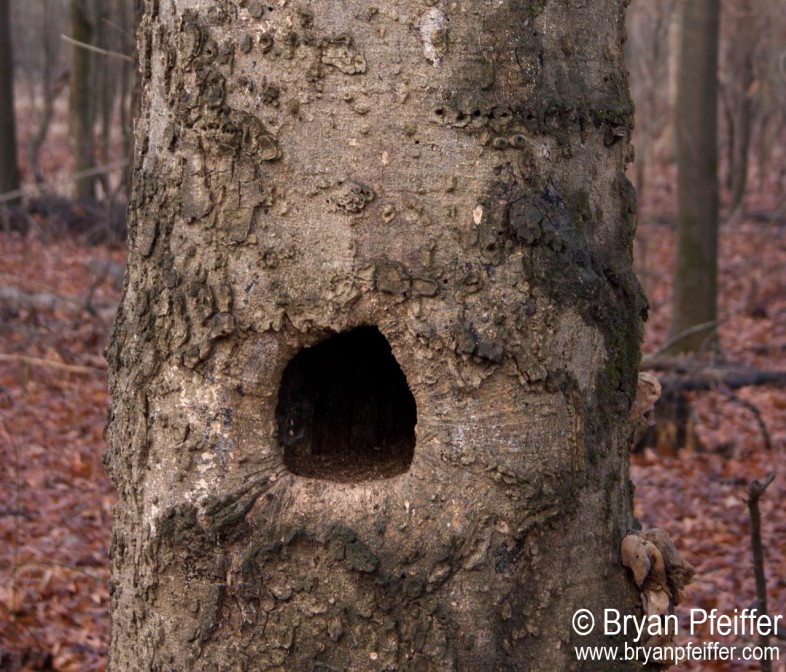 Tree cavities can mean the difference between life and death for birds and small mammals during a cold winter night. With a large surface to volume ratio they can lose heat quickly. Add wind to the mix and life becomes even more difficult for small animals.
Tree cavities can mean the difference between life and death for birds and small mammals during a cold winter night. With a large surface to volume ratio they can lose heat quickly. Add wind to the mix and life becomes even more difficult for small animals.
But not all tree cavities are created equal. The mean temperature differential between the cavity and the outside temperature can be as high as 9 degrees F. But it increases with higher day-to-night fluctuations in the ambient temperature, a smaller cavity entrance and better cavity tree health.
Squirrels den in tree cavities during winter, especially during high winds. One occupied cavity was 47 F when the outside temperature fell to a low of -4 F. The temperature in an occupied Raccoon den immediately begins to rise and remains more stable than outside air. A drop in outside temperature can be delayed by as much as two hours inside the cavity. In one den the temperature only changed 2 F while the outside temperature fell 23 F in an hour.
Because not all cavities are created equal, animals must choose the best site to roost at night. There is probably some level of competition between them. The predictors of microclimate – tree health and entrance size – may provide indirect cues to prospecting animals.
To the Bat Cave!
One of the nine bat species found in Vermont, the Little Brown Bat (Myotis lucifigus) was once abundant throughout the Northeast. It can still be found in Vermont, but it is now listed as an Endangered species. During warmer months (April-October) this bat is often found in urban and suburban settings: homes, attics, garages, even under shingles. But during winter, it’s a different story. Little Brown Bats spend the colder months chilling out in caves. Before White Nose Syndrome ravaged their populations, there were 30 known caves, called hibernacula, in Vermont.
As the weather cools, these bats begin to congregate and can be found in dense clusters on the walls and ceilings in the far recesses of caves. There they stay, in a state of torpor, for the remainder of the winter. Fat reserves provide the energy necessary for their stay, and during these months they will drop their body temperature, metabolism, and heart rate so as not to expend stored fat. Normally inactive during this time, they will sometimes awaken, especially if the weather warms or if disturbed, thereby depleting some of their energy reserves. By the time spring arrives, many bats will have lost up to half of their body weight. As the weather warms and their food source (insects) becomes more abundant, they begin to venture out, consuming up to 1,200 insects an hour. Learn more about Little Brown Bats from Outdoor Radio.
A Tale of Two Birches
Paper birches are beautiful in winter. But many people don’t realize that two species of paper birch trees grow in northeastern North America – Paper or White Birch (Betula papyrifera) and Heart-leaved Paper Birch (B. cordifolia), once considered a variety of White Birch. As its name suggests, the latter species has distinctive heart-shaped, many-veined leaves, and it is restricted to mid- to high-elevation Appalachian and northern forests.
The primary means of distinguishing Heart-leaved Paper Birch from White Birch include:
- The leaf base is heart-shaped (cordate)
- Its leaves are dotted with resin glands
- Young shoots are not hairy
- A bronze or pinkish inner bark shows when the outer bark peels (good field mark in winter!)
- It is genetically diploid (28 chromosomes), making it unlikely that these two species will readily hybridize. (not very helpful in the field!)
We know surprisingly little about the exact range of these two species. How low in elevation does Heart-leaved Paper Birch grow? How high does White Birch climb into the mountains? Do their ranges overlap in some areas? And how will these species respond to climate change, or have they already? Observers adding records to the Vermont Atlas of Life on iNaturalist are helping to map these (Heart-leaved Paper Birch map versus White Birch map) and many other species. We hope you will add your observations too.
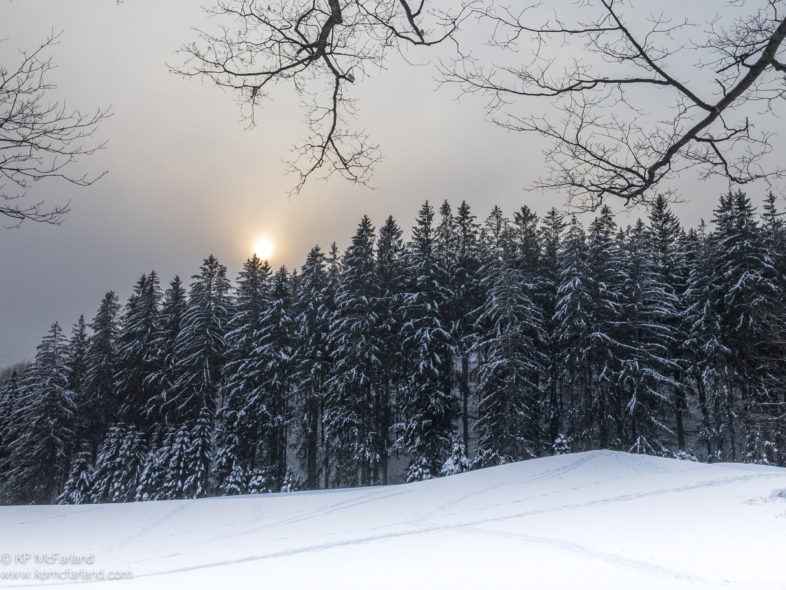
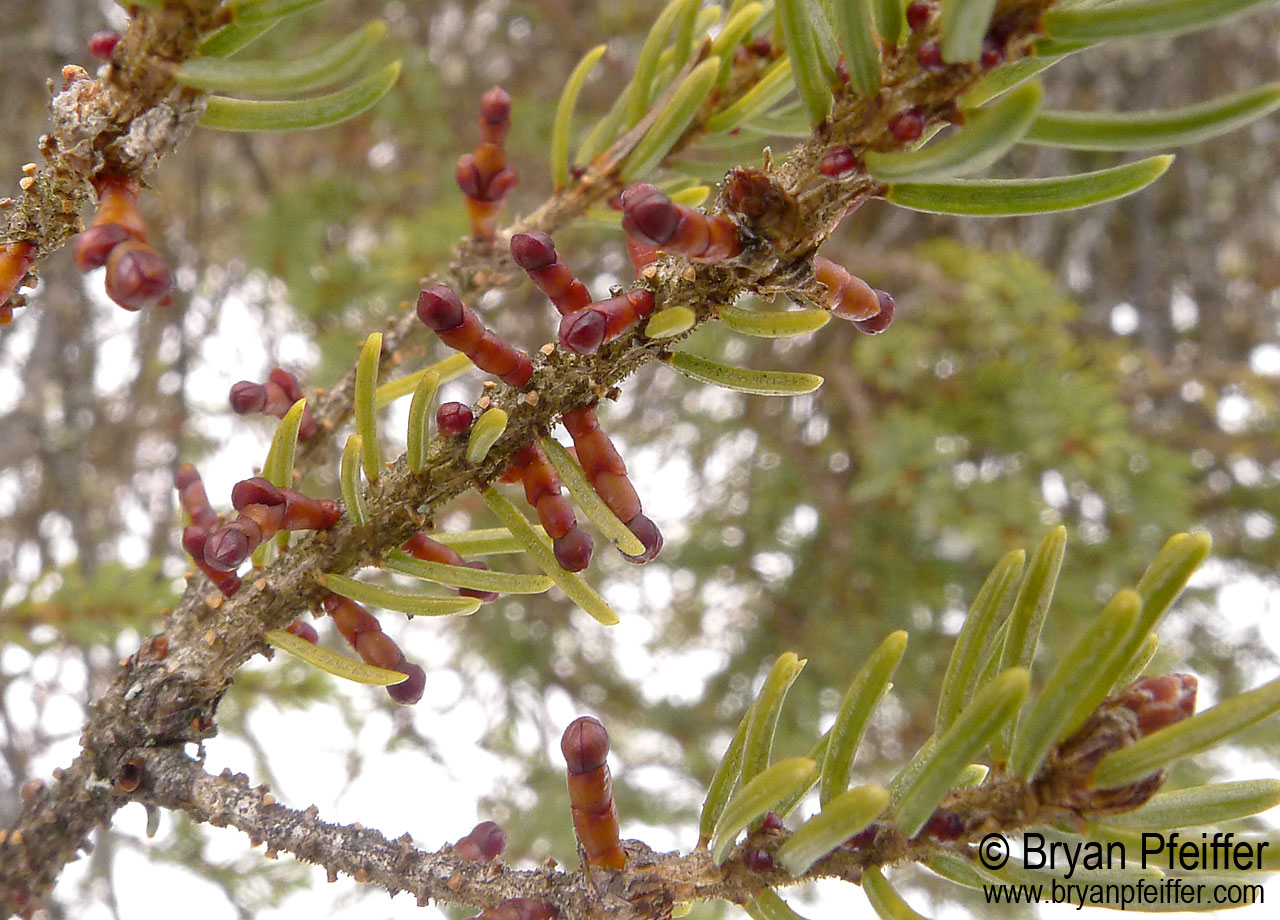
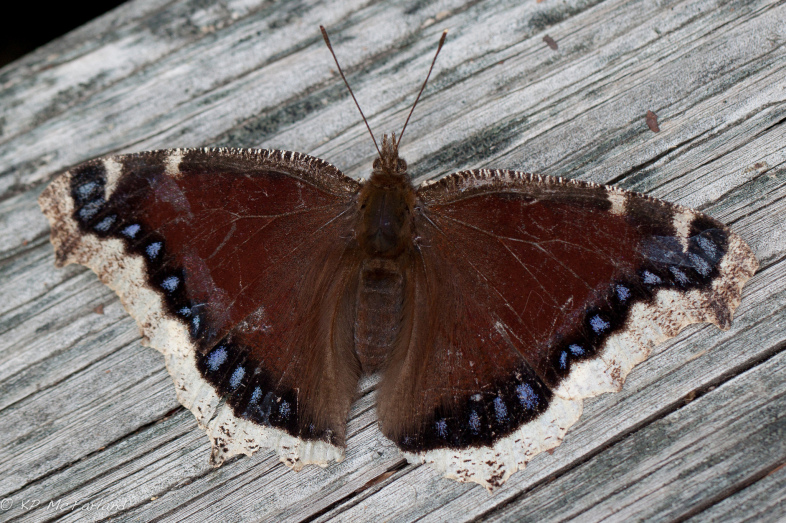
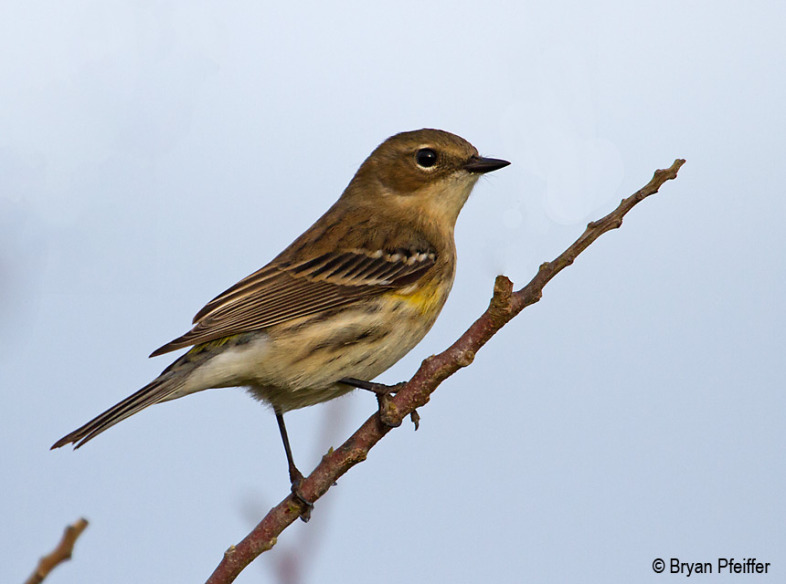
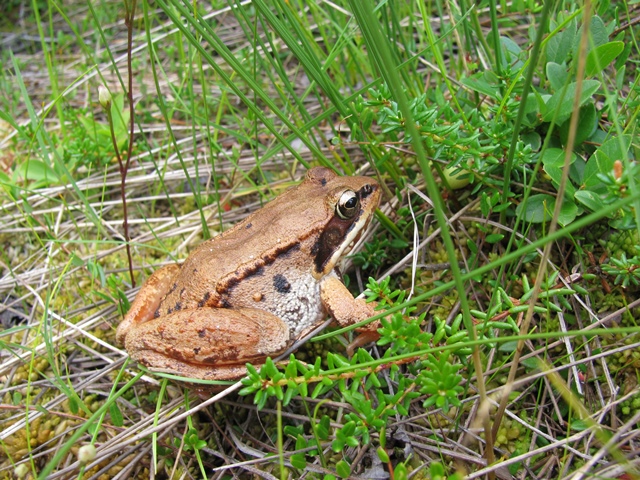
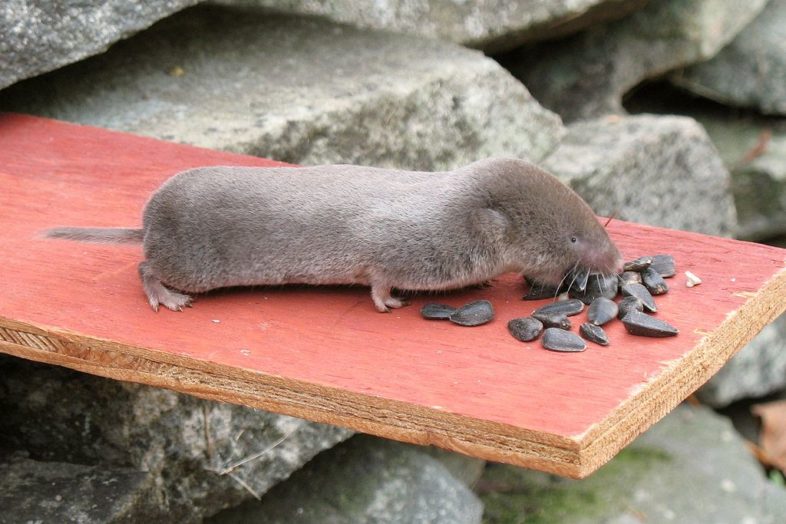
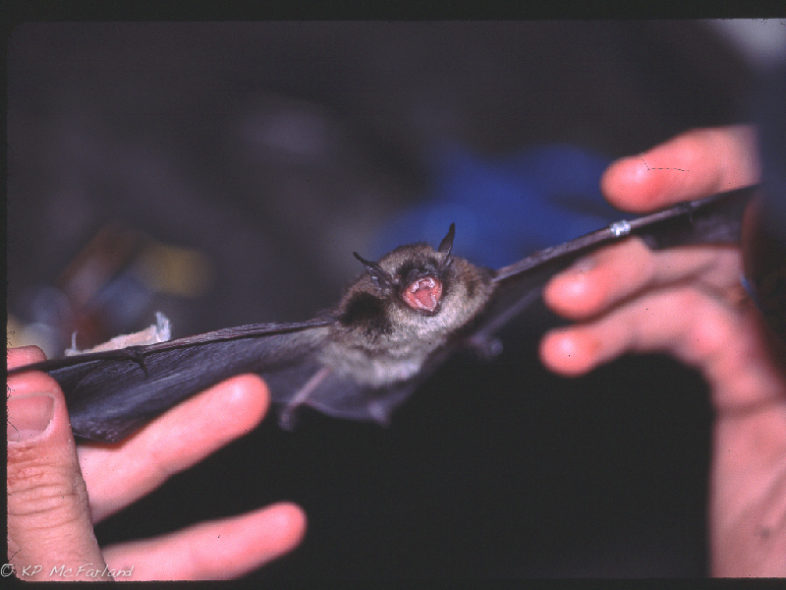
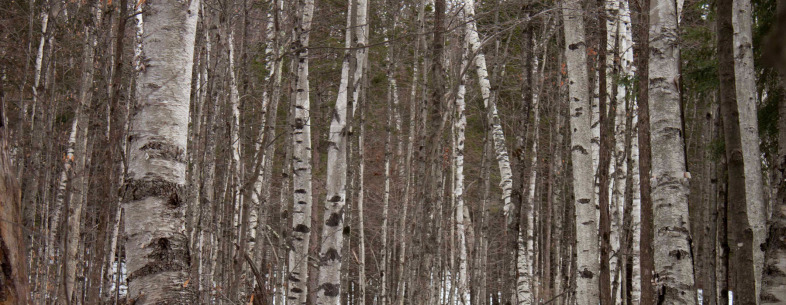

Fascinating articles!
Thanks Kent, this was a useful reminder of wild things “keeping on” during these long winter months. I especially liked the pieces on the mourning cloak and the dwarf mistletoe. Ted Jastrzembski
Love it